Medicinal Plants
by Physician Lee Song Cheong
& Bro. Ooi Chooi Seng
|
Introduced from India it is now used as a popular folk medicine through out the South East Asian region. The matured rhizomes are used as a stimulant for red blood cells production, to dissolve blood clots and to arrest bleeding. The fresh and dried rhizomes are used for treatment of peptic ulcer, dyspepsia, indigestion and flatulence.
|
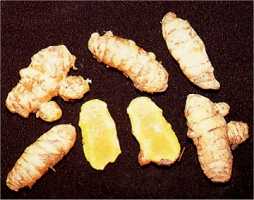
Turmeric, the matured rhizomes |
Also called the "yellow ginger", it is often used as a treatment for jaundice, irregular menstruation, stomach problems, abdomen pain, chest pain, back pain, diarrhoea and dysentery. The rhizomes contains volatile oil, curcumin and p-tolycarbinol. Volatile oil dispels stagnant gas from stomach and intestine. Curcumin and p-tolycarbinol increases the peptic and bile juices for digestion. Curcumin inhibits bacterial growth and inhibits gas production by bacteria, stimulates mucous secretion to coat the stomach and promotes the healing of peptic ulcer. It is also externally used for itching and infected wounds by grinding fresh rhizomes and applying to the wounds.
|
A member of the Ginger family. It is an erect, terrestrial, perennial herbacious plant with creeping underground rhizomes. The leaves are simple, and leaf stalk can reach up to 1.5 meters high. However average plants usually only reach around 75 cms. It is a bottom flowering curcuma, inflorescence is terminal, cylindrical spike on the apex of the rhizomes, peduncle surrounded by sheaths of leaf bracts. Flower colour are pale yellow with light green or whitish bractcoles. Fruits are three lobed capsules. Grows from seeds or rhizomes.
|
Lord Buddha and all the early Buddhist monks use the orange-yellow colouring obtained from the matured rhizomes of this plant to dye their robes. This juice extracted from the crushed tumeric is favoured for giving a bright yellow colour and is used as a condiment to colour ceremonial rice and special dishes in South East Asian food. As a spice, the flavour and colour of the fresh turmeric rhizomes is so intense, it is used only in small quantities. Fresh turmeric leaves are used as a herb in some Nyonya, Malay and Thai dishes. The flowers can be eaten too and is a Thai delicacy where the inflorescences are either boiled, fried or deep-fried with batter. |

Lord Buddha and monks
in turmeric robes. |
THE TURMERIC PLANT AND FLOWERS
|
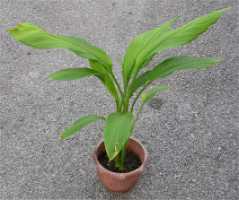
|
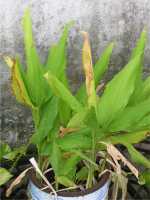
|
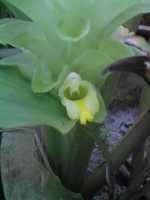
|
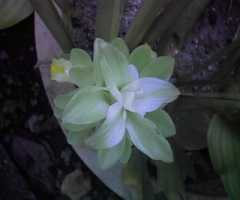
|
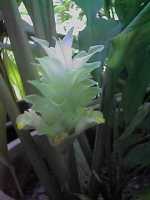
|
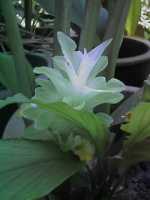
|
 |
click to print this article |
 |
back to medicinal plants archive |
 |
back to articles archive |
 |
back to e-zine main |
|
|



